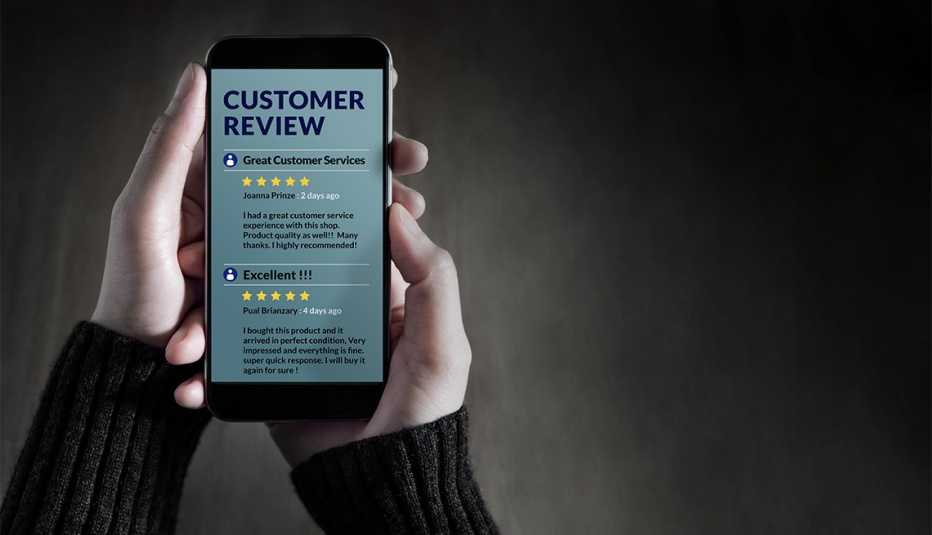AARP Hearing Center


We’ve heard the term “fake news” quite a bit in recent years, but another big problem in the age of misinformation is fake reviews — and it’s one that can hit you right in the wallet.
Positive comments on your favorite shopping site perhaps nudged you to buy a home security camera you had your eye on, only to find it was an inferior product. And little did you know that employees of a rival hotel wrote the negative reviews of a Mexican vacation property that persuaded you to pass on the resort.
Discerning whether online reviews are legitimate can be tough. Consumer Reports found that 74 percent of Americans read online reviews before making purchase decisions “at least sometimes,” according to a 2020 national survey. But 76 percent of those surveyed said they thought they had encountered fake reviews in the process.
FTC takes action
On June 30, the Federal Trade Commission (FTC) proposed a new a rule that would penalize such deceptive activity as “using fake reviews, suppressing honest negative reviews, and paying for positive reviews” with stiff penalties.
Shoppers rely on reviews
Almost 3 of every 4 respondents to a Consumer Reports poll said they at least “sometimes” read online reviews before making a purchasing decision. The breakdown:
• Always or almost always 32%
• Often 16%
• Sometimes 26%
• Hardly ever 9%
• Never 17%
Source: Consumer Reports
“Our proposed rule on fake reviews shows that we’re using all available means to attack deceptive advertising in the digital age,” said Samuel Levine, director of the FTC’s Bureau of Consumer Protection, in a statement. “The rule would trigger stiff civil penalties for violators and should help level the playing field for honest companies.”
The FTC’s Notice of Proposed Rulemaking seeks public comment on whether such a rule would be helpful. It also has online guidance for acceptable practices for reviews and endorsements.
If the proposed rule is adopted, businesses would not be able to write or sell consumer reviews or testimonials from someone who does not exist. Among other measures, companies would be prohibited from using or repurposing a consumer review written for one product so that it appears to have been written for a “substantially different” product. A company’s officers, managers or other insiders would also be prohibited from writing reviews — unless the reviewer’s relationship to the company is disclosed. And businesses would be prohibited from using legal threats or other forms of intimidation to prevent or remove a negative review.
Many perpetrators have already been penalized. In a January settlement with the FTC, online retailer Fashion Nova was required to pay $4.2 million for suppressing negative reviews on its site.
Amazon bans sellers
Online stores and marketplaces are also attempting to crack down.
Amazon recently touted its “dedicated global team of expert investigators, lawyers, analysts and other specialists [that] track down fake review brokers, piece together evidence about how they operate, and take legal action against them.”





































































More From AARP
How To Bail on Amazon Prime
These are the steps to cancel Prime membership
Tech Support Scams Are Rampant in 2023
How to thwart criminals who pretend to fix computer problems but steal your money insteadYou Won’t Get Rich, but You Can Get Money From Google
Payouts part of a $23 million class-action privacy settlement